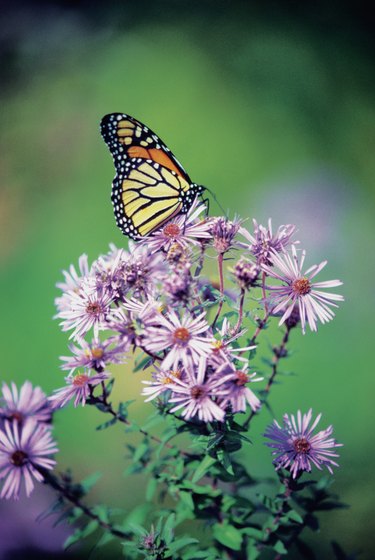
Excess moisture near your home's foundation causes structural damage, and the wrong types of vegetation planted too close to the home will exacerbate the problem, leading to dampness in basements and crawl spaces. Plants that require frequent or heavy watering draw water toward the house while drought-tolerant species help to prevent excess water from seeping into the foundation.
Rain Gardens
Video of the Day
Rain gardens act like a sponge to absorb excess water that pools near the home, preventing it from seeping into the foundation. Plant a rain garden in a natural depression or dig a shallow depression at least 10 feet from the foundation. Thirsty plants in a rain garden soak up water that runs off surfaces at higher elevations, such as rooftops, roads and driveways. Rain gardens should be located downhill from the foundation with a minimum slope of 1 percent.
Video of the Day
Plant Selection
Place plants adapted for wet conditions in the deepest part of the rain garden. Plants that prefer drier conditions will fare better near the shallow edges of the rain garden. If you live in the north where salt is often used on roads and driveways, select salt-tolerant plant species because runoff from these impermeable surfaces collects in rain gardens.
Native Species
Native plant species are better adapted to the climate and soil around your home. Native plants tolerate dry conditions and need little or no watering throughout the growing season. Native plants, especially wildflowers and grasses, have deeper roots than lawn grass. Their deep root systems allow them to access water during drought and make them be able to soak up a large volume of water during wet periods.
Herbaceous Plants
Herbaceous plants add color and texture to your landscaping while drawing moisture away from your home. Native perennial wildflowers and grasses are easy to care for and provide season-long color. Depending on your location, native perennials can include coneflower, cinnamon fern, phlox, aster, black-eyed susan, columbine, lobelia, and native grasses such as switch grass and Indian grass.
Trees and Shrubs
Native shrubs and trees add height and volume to your rain garden. If space and budget allow, incorporate some larger, woody plants into your landscape design such as native azalea, buttonbush, spicebush or winterberry. Native trees suited to rain gardens include sycamore, sweetgum, dogwood and river birch. The deep roots of these trees quickly drain runoff after a storm or standing water that accumulates after a long rainy period. Trees and shrubs over 6 feet tall should be planted so tips of the foliage are at least 5 feet from the house.